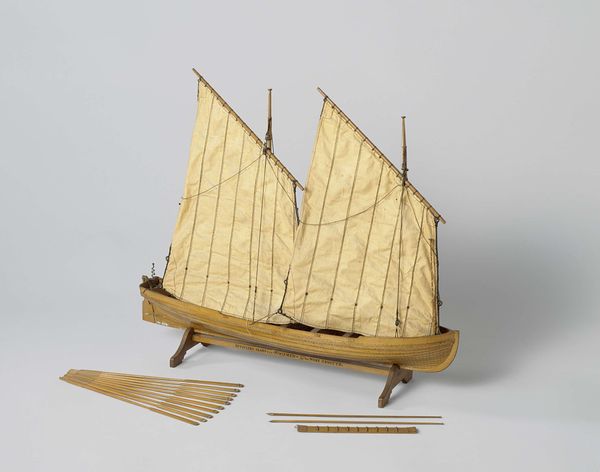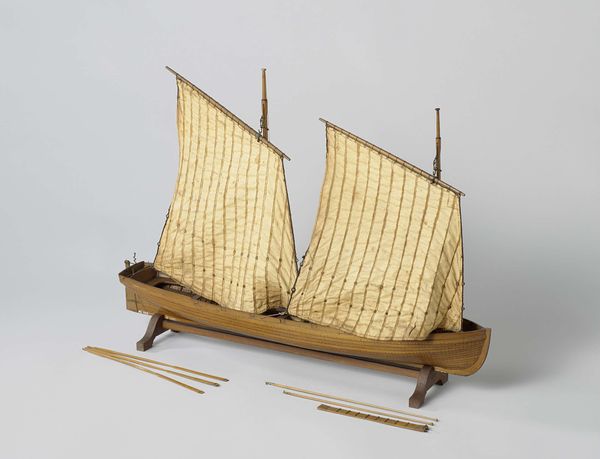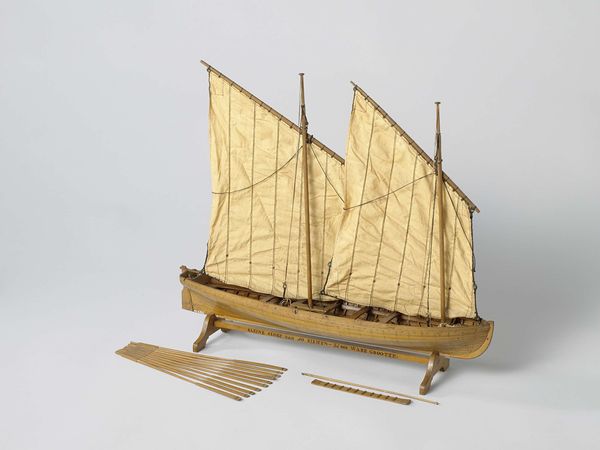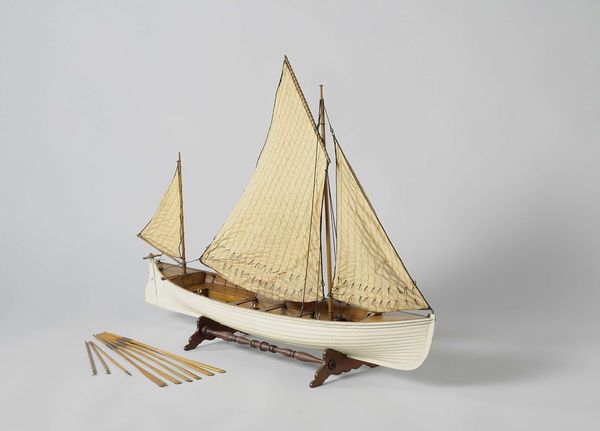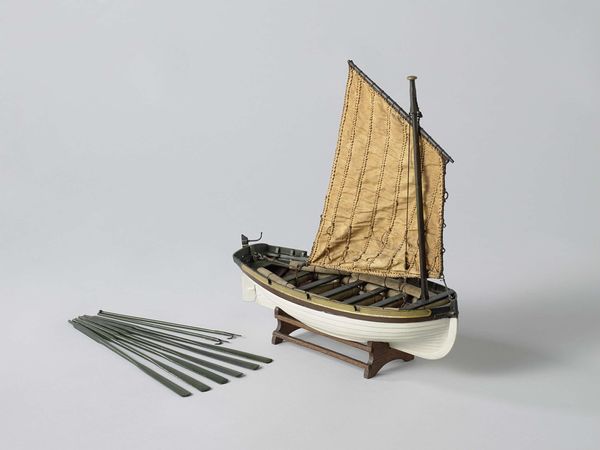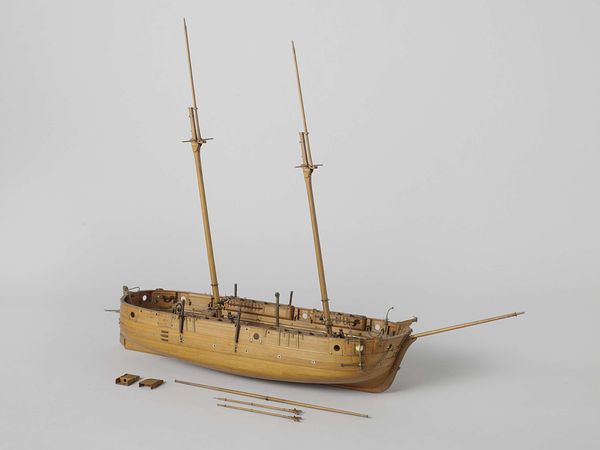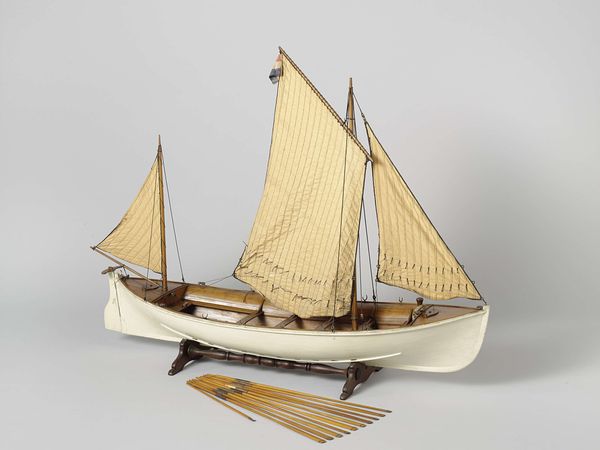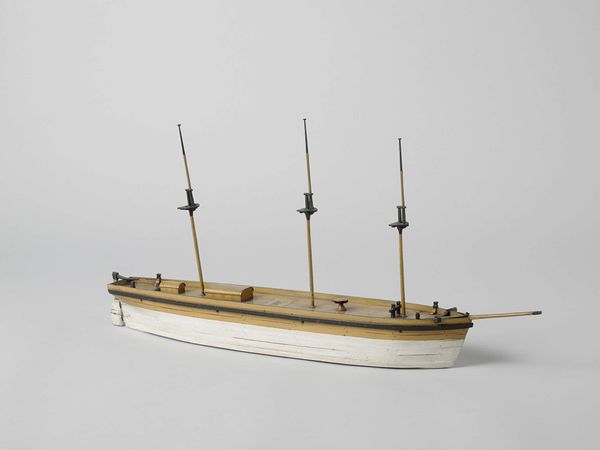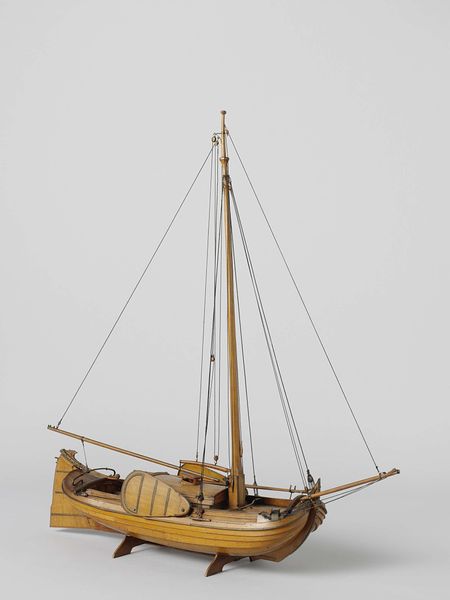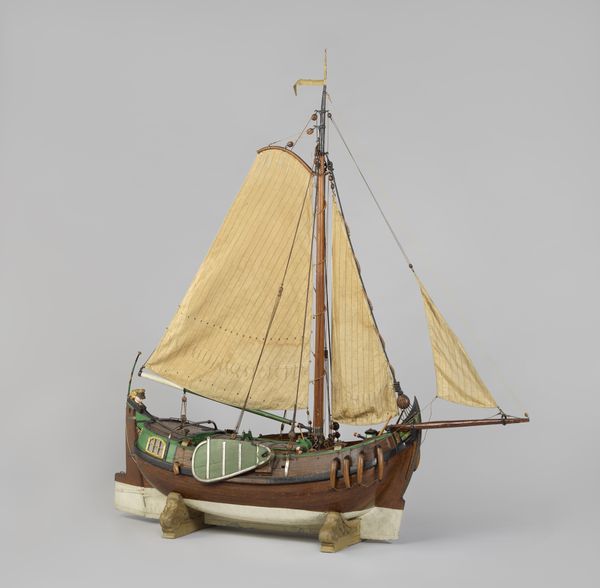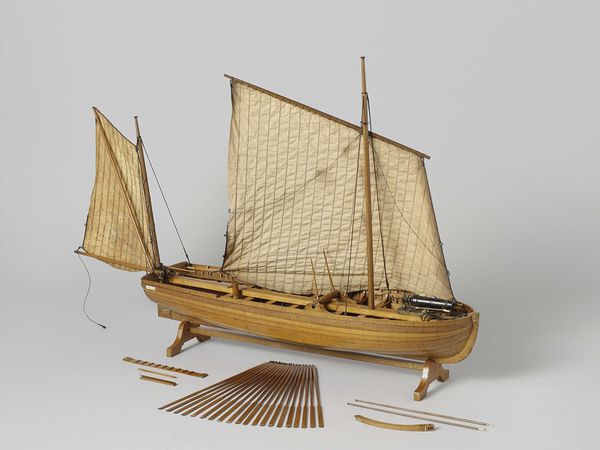
wood
#
figuration
#
wood
Dimensions: height 29 cm, length 39.4 cm, width 9.4 cm
Copyright: Rijks Museum: Open Domain
Editor: Here we have the "Model of a Jolly Boat" from 1836, crafted out of wood, presumably by Rijkswerf Vlissingen. I find it charmingly old-fashioned. What strikes you most about this little vessel? Curator: Well, consider the historical context. This wasn’t merely a quaint hobbyist's creation. These models were often made by the shipbuilders themselves. Now, who built ships then? Who profited? Who sailed? Editor: I guess usually it was wealthy merchants who could use ships to amass wealth and power through global trade? Curator: Exactly. And consider the role of colonization, and the lives displaced by maritime trade. The "Jolly Boat" itself would have been used for tasks such as ferrying supplies, reconnaissance or coastal exploration; not all jolly ventures, were they? It looks quite peaceful sitting there now, though. Don't you agree that it serves to highlight who controls the narrative? Who tells the story of "progress?" Who gets to enjoy such craftsmanship? Editor: That's a pretty grim, though incredibly helpful, perspective on something so seemingly innocent. I see how easy it is to romanticize nautical history. Curator: It's vital to constantly question whose perspective is centered. Looking at this lovely model of a jolly boat – whose "jolly" are we really talking about? Are we centering the exploited or the exploiters? What do we, now, make of a world built on unequal structures? Editor: It makes you wonder if we're perpetuating a legacy by only admiring the surface. Thanks, I hadn't thought about it that way. Curator: That's the power of art. It's never just about aesthetics; it's a mirror reflecting societal power.
Comments
No comments
Be the first to comment and join the conversation on the ultimate creative platform.

